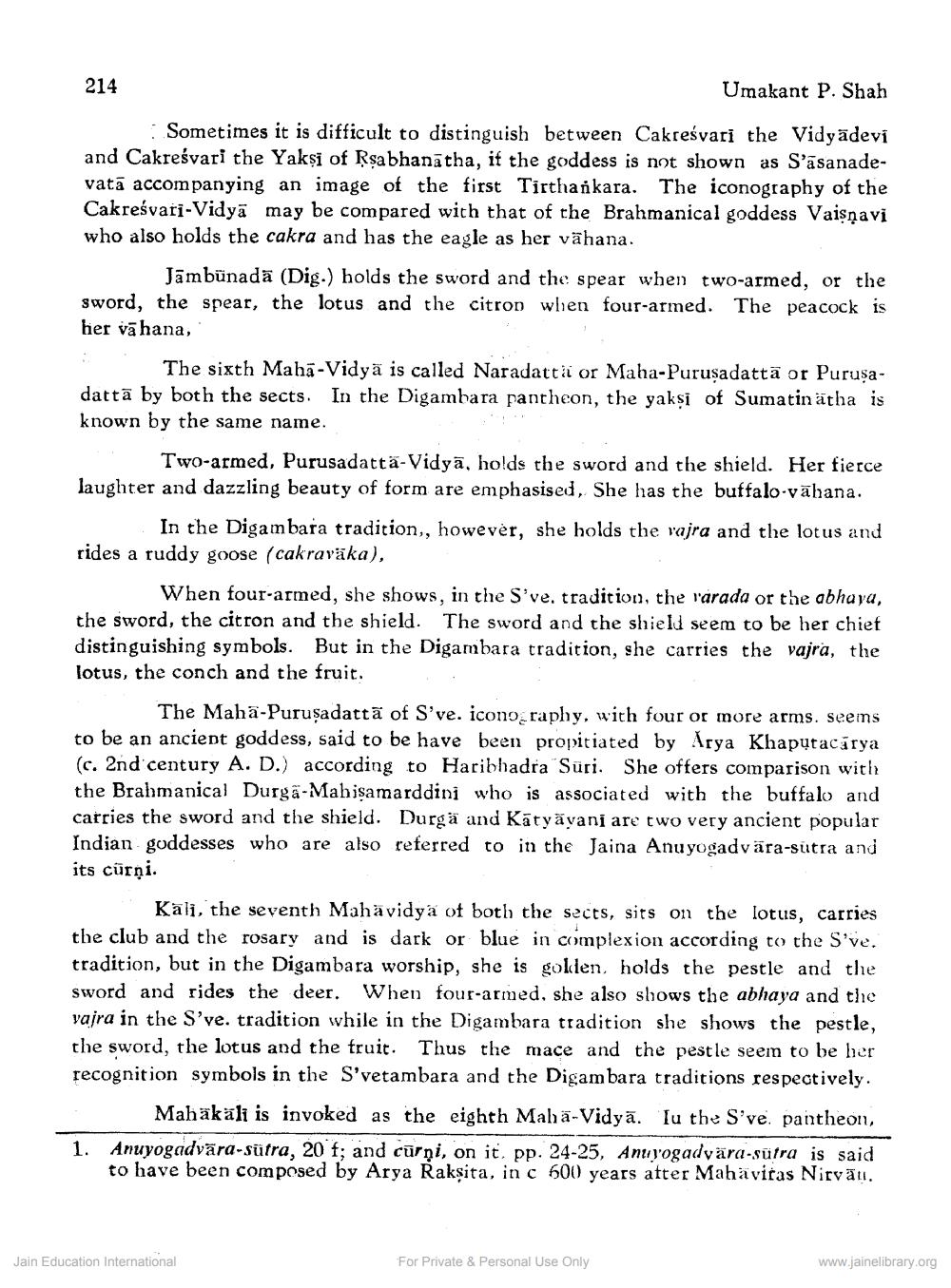________________
214
Umakant P. Shah
Sometimes it is difficult to distinguish between Cakreśvari the Vidyadevi and Cakreśvari the Yakși of Ķsabhanatha, it the goddess is not shown as S'asanadevatā accompanying an image of the first Tirthaikara. The iconography of the Cakreśvari-Vidyā may be compared with that of the Brahmanical goddess Vaişņavi who also holds the cakra and has the eagle as her vähana.
Jāmbūnada (Dig.) holds the sword and the spear when two-armed, or the sword, the spear, the lotus and the citron wlien four-armed. The peacock is her vāhana,
The sixth Maha-Vidya is called Naradatta or Maha-Puruşadattā or Puruşadattā by both the sects. In the Digambara pantheon, the yakși of Sumatin ätha is known by the same name.
Two-armed, Purusadatta-Vidyā, holds the sword and the shield. Her fierce laughter and dazzling beauty of form are emphasised, She has the buffalo-vāhana.
In the Digambara tradition,, however, she holds the vajra and the lotus and rides a ruddy goose (cakraväka),
When four-armed, she shows, in the S've, tradition, the rarada or the abhaya, the sword, the citron and the shield. The sword and the shield seem to be her chiet distinguishing symbols. But in the Digambara tradition, she carries the vajra, the lotus, the conch and the fruit.
The Maha-Puruşadattā of S've. iconography, with four or more arms. seems to be an ancient goddess, said to be have been propitiated by Arya Khaputacārya (c. 2nd century A. D.) according to Haribhadra Suri. She offers comparison with the Brahmanical Durga-Mahisamarddini who is associated with the buffalo and carries the sword and the shield. Durga and Katyävani are two very ancient popular Indian goddesses who are also referred to in the Jaina Anu yogadvāra-sutra and its cürņi.
Kāli, the seventh Mahavidya of both the sects, sits on the lotus, carries the club and the rosary and is dark or blue in complexion according to the S've. tradition, but in the Digambara worship, she is gokien, holds the pestle and the sword and rides the deer. When four-armed, she also shows the abhaya and the vajra in the S've. tradition while in the Digambara tradition she shows the pestle, the sword, the lotus and the truit. Thus the mace and the pestle seem to be her recognition symbols in the S'vetambara and the Digambara traditions respectively.
Mahäkäli is invoked as the eighth Mahä-Vidyā. Tu the S've pantheon, 1. Anuyogadvāra-süfra, 20 f; and cūrni, on it. pp. 24-25, Anu yogadvära-sutra is said
to have been composed by Arya Rakşita, in c 600 years after Mahävitas Nirväll.
Jain Education International
For Private & Personal Use Only
www.jainelibrary.org




